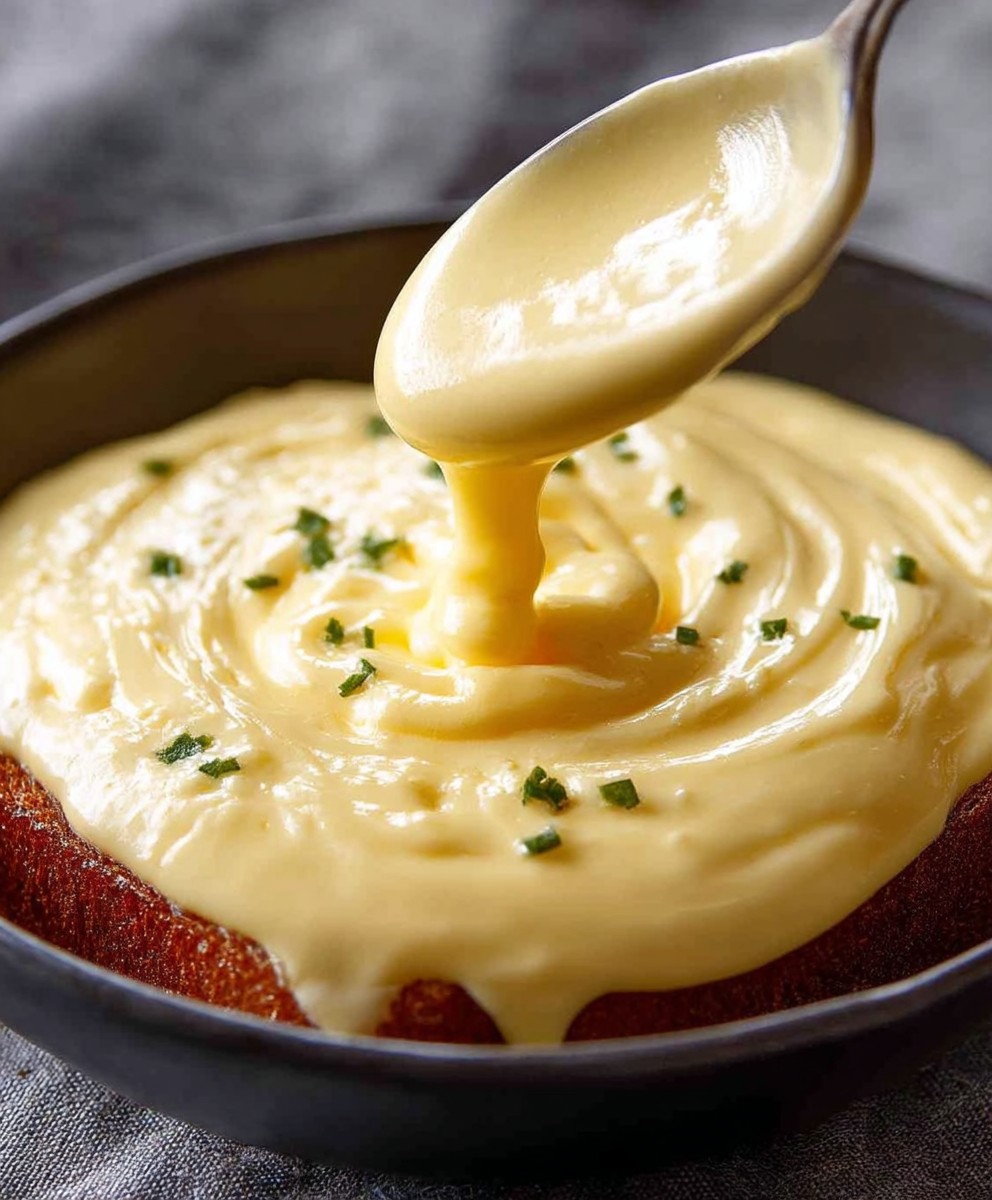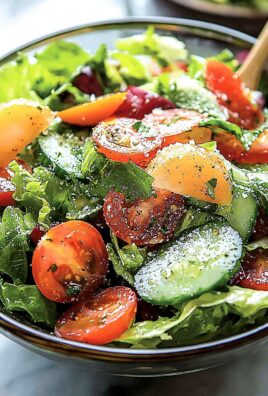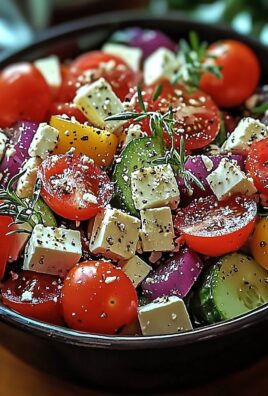Hollandaise Sauce: Easy, Quick, and Absolutely Divine! Have you ever dreamt of effortlessly drizzling a velvety, rich sauce over your Eggs Benedict, asparagus, or grilled salmon? Well, dream no more! I’m here to share a foolproof method for creating a luscious hollandaise sauce that’s both easy and quick to prepare.
This classic sauce, one of the five mother sauces of French cuisine, has a history as rich as its flavor. Believed to have originated in Normandy, France, it was initially called “sauce Isigny” after the town known for its cream. Over time, it evolved into the hollandaise sauce we know and love today, a testament to the enduring appeal of simple ingredients transformed into something extraordinary.
But what makes hollandaise so irresistible? It’s the perfect balance of tangy lemon, creamy butter, and rich egg yolks, creating a symphony of flavors that dance on your palate. Its smooth, emulsified texture adds a luxurious touch to any dish. And while it might seem intimidating, my method makes achieving hollandaise perfection surprisingly accessible, even on a busy weeknight. Get ready to impress your friends and family with this culinary masterpiece!
Ingredients:
- 1/2 cup (1 stick) unsalted butter, cut into cubes
- 3 large egg yolks
- 1 tablespoon lemon juice, freshly squeezed
- 1 tablespoon water
- 1/4 teaspoon salt, or to taste
- Pinch of cayenne pepper (optional)
Preparing the Hollandaise Sauce: A Step-by-Step Guide
Okay, let’s get started! Making hollandaise sauce can seem intimidating, but trust me, with a little patience and these easy steps, you’ll be drizzling it over your eggs Benedict in no time. The key is gentle heat and constant whisking. Don’t rush it!
- Melt the Butter: In a small saucepan over low heat, gently melt the butter. You want it completely melted but not browned. Once melted, remove from the heat and set aside. We’ll need it later, so keep it warm.
- Prepare the Double Boiler (or Improvise!): The best way to make hollandaise is using a double boiler. If you don’t have one, don’t worry! You can easily create one. Find a heatproof bowl that fits snugly over a saucepan without touching the bottom. Fill the saucepan with about an inch or two of water and bring it to a simmer over medium-low heat. The steam from the simmering water will gently cook the egg yolks.
- Combine Egg Yolks, Lemon Juice, and Water: Place the egg yolks, lemon juice, and water in the heatproof bowl (or the top of your double boiler). Whisk them together vigorously until they are well combined and slightly pale in color. This usually takes about 30 seconds.
- Cook the Egg Yolk Mixture: Place the bowl over the simmering water (or use your double boiler). It’s crucial that the bowl doesn’t touch the water, as this could cook the eggs too quickly and scramble them. Now, the real work begins! Whisk the egg yolk mixture constantly and vigorously. This is important to prevent the eggs from curdling and to create a smooth, emulsified sauce.
- Whisk Until Thickened: Continue whisking the egg yolk mixture over the simmering water for about 5-7 minutes, or until it thickens and becomes pale yellow. The mixture should be thick enough to coat the back of a spoon. To test this, dip a spoon into the mixture and run your finger across the back of the spoon. If the line holds its shape and doesn’t immediately run back together, it’s ready. Be patient! This step is crucial for the right consistency.
- Remove from Heat: Once the egg yolk mixture has thickened, immediately remove the bowl from the heat. This is important to prevent overcooking. Set it aside on a cool surface.
- Slowly Drizzle in the Melted Butter: Now comes the fun part! This is where the magic happens. Slowly, and I mean slowly, drizzle the melted butter into the egg yolk mixture while whisking constantly and vigorously. It’s essential to add the butter in a thin, steady stream to allow it to emulsify properly with the egg yolks. If you add the butter too quickly, the sauce may break (separate).
- Whisk Until Emulsified: Continue whisking as you drizzle in the butter until all the butter is incorporated and the sauce is smooth, glossy, and thick. The sauce should have a beautiful, creamy texture.
- Season to Taste: Once the sauce is emulsified, season it with salt and cayenne pepper (if using). Taste the sauce and adjust the seasoning as needed. You may want to add a little more lemon juice for extra tang, or a pinch more salt to enhance the flavor.
- Serve Immediately: Hollandaise sauce is best served immediately. It can be kept warm for a short period of time by placing the bowl over a warm (not hot) water bath, but it’s best to use it right away. If it sits for too long, it may start to separate.
Troubleshooting Your Hollandaise Sauce
Sometimes, even with the best intentions, things can go wrong. Here are a few common problems and how to fix them:
Sauce is Too Thin:
If your hollandaise sauce is too thin, it means it hasn’t emulsified properly or the egg yolks weren’t cooked enough. You can try to thicken it by whisking it vigorously over very low heat (or a warm water bath) for a minute or two. Be careful not to overcook it!
Sauce is Too Thick:
If your hollandaise sauce is too thick, it means you may have overcooked the egg yolks or added too much butter. You can thin it out by whisking in a teaspoon or two of warm water or lemon juice until it reaches the desired consistency.
Sauce Breaks (Separates):
If your hollandaise sauce breaks (separates), it means the emulsion has failed. This usually happens when the butter is added too quickly or the temperature is too high. Don’t panic! You can often fix it. Here’s one method:
- In a clean bowl, whisk one tablespoon of warm water or lemon juice.
- Slowly drizzle the broken hollandaise sauce into the water/lemon juice, whisking constantly and vigorously. The sauce should start to come back together.
- If it’s still not coming together, you can try adding another egg yolk to the clean bowl and then slowly drizzling in the broken sauce.
Sauce Tastes Eggy:
If your hollandaise sauce tastes too eggy, it means the egg yolks weren’t cooked enough. Unfortunately, there’s not much you can do to fix this. Next time, make sure to cook the egg yolk mixture until it’s thick enough to coat the back of a spoon.
Tips for Success
- Use Fresh Ingredients: Fresh eggs and lemon juice will give you the best flavor.
- Use Room Temperature Eggs: Room temperature eggs emulsify more easily than cold eggs.
- Don’t Overcook the Eggs: Overcooked eggs will result in a grainy or curdled sauce.
- Add the Butter Slowly: Adding the butter too quickly is the most common cause of broken hollandaise sauce.
- Whisk Constantly: Constant whisking is essential for creating a smooth, emulsified sauce.
- Taste and Adjust Seasoning: Don’t be afraid to adjust the seasoning to your liking.
Serving Suggestions
Hollandaise sauce is incredibly versatile and can be used in a variety of dishes. Here are a few ideas:
- Eggs Benedict: The classic pairing!
- Asparagus: Drizzle hollandaise sauce over steamed or grilled asparagus for a delicious side dish.
- Broccoli: Hollandaise sauce adds a rich and creamy flavor to broccoli.
- Salmon: Serve hollandaise sauce with grilled or baked salmon for a decadent meal.
- Vegetable Gratins: Use hollandaise sauce as a base for vegetable gratins.
So there you have it! A comprehensive guide to making easy and delicious hollandaise sauce. Don’t be afraid to experiment and have fun with it. With a little practice, you’ll be a hollandaise sauce pro in no time!

Conclusion:
This isn’t just another recipe; it’s your express ticket to mastering the art of easy quick Hollandaise sauce. Forget the complicated double boilers and endless whisking this method delivers a luxuriously smooth, tangy, and utterly decadent sauce in mere minutes. Trust me, once you taste the difference homemade makes, you’ll never reach for the jarred stuff again!
But why is this recipe a must-try? Because it’s foolproof! I’ve streamlined the process, eliminating common pitfalls and ensuring success even for kitchen novices. The result is a sauce that’s rich enough to impress your most discerning guests, yet simple enough to whip up on a weeknight. It’s the perfect balance of elegance and practicality, making it an invaluable addition to your culinary repertoire.
Beyond its ease, the flavor is simply divine. The bright lemon juice cuts through the richness of the butter and egg yolks, creating a symphony of flavors that will tantalize your taste buds. It’s a sauce that elevates any dish it graces, transforming the ordinary into something truly special.
Now, let’s talk serving suggestions. Classic Eggs Benedict is an obvious choice, and for good reason! The creamy Hollandaise cascading over perfectly poached eggs and crispy Canadian bacon is a match made in heaven. But don’t stop there! This sauce is incredibly versatile.
Consider drizzling it over steamed asparagus or broccoli for a simple yet elegant side dish. It’s also fantastic with grilled salmon or pan-seared scallops, adding a touch of richness and sophistication. For a vegetarian option, try it with roasted artichokes or a vibrant vegetable frittata.
And if you’re feeling adventurous, why not experiment with some variations? Add a pinch of cayenne pepper for a subtle kick, or a dash of smoked paprika for a smoky depth of flavor. A squeeze of lime juice instead of lemon can add a refreshing twist, perfect for seafood dishes. You could even infuse the melted butter with herbs like tarragon or dill for an extra layer of complexity. The possibilities are endless!
Serving Suggestions:
- Eggs Benedict (classic!)
- Steamed Asparagus
- Grilled Salmon
- Roasted Artichokes
- Vegetable Frittata
Variations:
- Cayenne Pepper (for a kick)
- Smoked Paprika (for smoky depth)
- Lime Juice (for a refreshing twist)
- Herb Infusion (Tarragon, Dill)
I truly believe that everyone should have a reliable Hollandaise sauce recipe in their back pocket, and this is it. It’s quick, easy, and delivers exceptional results every time. So, what are you waiting for? Gather your ingredients, follow the simple steps, and prepare to be amazed.
I’m confident that you’ll love this easy quick Hollandaise sauce as much as I do. Once you’ve tried it, I’d love to hear about your experience! Share your photos and comments on social media using [Your Hashtag Here], and let me know what dishes you’ve paired it with. I’m always eager to see your culinary creations and learn from your experiences. Happy cooking! I can’t wait to hear from you!
Hollandaise Sauce: Easy Quick Recipe for Perfect Results
Rich and creamy homemade hollandaise sauce, perfect for eggs Benedict, vegetables, and more.
Ingredients
- 1/2 cup (1 stick) unsalted butter, cut into cubes
- 3 large egg yolks
- 1 tablespoon lemon juice, freshly squeezed
- 1 tablespoon water
- 1/4 teaspoon salt, or to taste
- Pinch of cayenne pepper (optional)
Instructions
- Melt the Butter: In a small saucepan over low heat, gently melt the butter. Once melted, remove from the heat and set aside. Keep warm.
- Prepare Double Boiler: Create a double boiler by placing a heatproof bowl over a saucepan of simmering water (bowl shouldn’t touch the water).
- Combine Yolks, Juice, Water: In the heatproof bowl, whisk together egg yolks, lemon juice, and water until well combined and slightly pale (about 30 seconds).
- Cook Egg Yolk Mixture: Place the bowl over the simmering water. Whisk constantly and vigorously for 5-7 minutes, or until the mixture thickens and becomes pale yellow and coats the back of a spoon.
- Remove from Heat: Immediately remove the bowl from the heat.
- Drizzle in Butter: Slowly drizzle the melted butter into the egg yolk mixture while whisking constantly and vigorously. Add the butter in a thin, steady stream.
- Whisk Until Emulsified: Continue whisking until all the butter is incorporated and the sauce is smooth, glossy, and thick.
- Season to Taste: Season with salt and cayenne pepper (if using). Adjust seasoning as needed.
- Serve Immediately: Serve immediately. Can be kept warm briefly over a warm water bath.
Notes
- Use fresh, room-temperature eggs for best results.
- Melt butter gently and keep warm.
- Whisk constantly to prevent curdling.
- Add butter slowly to ensure proper emulsification.
- If the sauce is too thin, whisk over very low heat for a minute or two.
- If the sauce is too thick, whisk in a teaspoon or two of warm water or lemon juice.
- If the sauce breaks, whisk one tablespoon of warm water or lemon juice in a clean bowl, then slowly drizzle in the broken hollandaise sauce while whisking.





Leave a Comment